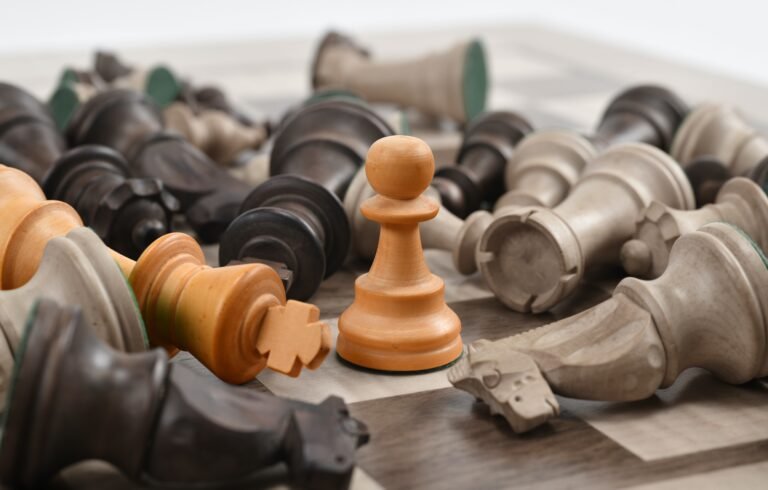Creativity is a skill that can open up a world of possibilities. It allows us to create something out of nothing, to be original and innovative, and to express ourselves in unique ways. Creativity wants us to break the rules, but for some, tapping into their creativity seems impossible. How do you get past the roadblocks and become a creative person? Set rules. That’s right, you need rules to tell you how to break the rules. In this article, we’ll be discussing 4 rules to set that will make you a more creative person and boost your skills.
TAKE ON NEW CHALLENGES
Getting creative is one of the most rewarding experiences that anyone can have, but it comes with its fair share of challenges. Some of the most common difficulties that creatives face include figuring out how to effectively communicate ideas and expressing yourself in unique ways. It also takes a great deal of experimentation to figure out what works best for your project, and some fields such as photography, videography, design, and graphic design require a high degree of technical skill. Overcoming these challenges can be daunting, but taking on new creative challenges will help you develop and improve your skills.
For example, if you are a designer and you are looking to take your skills to the next level, try tackling a project that requires more complex techniques than you are used to. This could include learning a new software, exploring new styles of design, or experimenting with different mediums. By taking on these new challenges, you will be better equipped to handle the obstacles you faced when starting out. Not only will this help you become a better creative, but it will also give you the opportunity to explore different avenues and find out what truly inspires you. By challenging yourself and pushing your own boundaries, you will be able to grow both creatively and professionally. Taking on new challenges can be intimidating at first, but it is an essential part of growth and development in any field.
FORCE INSPIRATION EVERYDAY
Practicing creative work is one of the most important steps to becoming a more creative person. Why? Because contrary to what many people believe, creativity doesn’t need to strike you. Many people become discouraged when they don’t have naturally occurring moments of deep and meaningful inspiration. But the reality is, these rarely occur, even for the most successful creatives. Inspiration can be natural and unforced, but your creative work will benefit from making this same inspiration artificial and forced.
Ask yourself, “what is the minimum threshold I need to reach to achieve creativity?” This isn’t just in reference to how much time is spent, but the mental state you need to be in as well. Manufacture this environment for yourself.
For example: You head to an appointment on time as usual, because you’re a punctual person. The person you are meeting, however, they’re not. Six minutes later, they arrive.
How did you spend the six minutes? Most people would open Instagram, check their emails, or, if you’re like me, start a game of bullet chess. 6 minutes may not seem like much, but was it enough time to take a photo, start drafting an article, or sketch out a new idea? Killing time is killing creativity. Don’t wait for an “a-ha” moment; those happen naturally, but not often. Instead, make sure you have the right mindset and focus on what you’re trying to create. Even if you’re just starting out, it’s important to practice these disciplines regularly so you can improve and grow as a creative person. Whether you take 5 minutes or 1 hour each day to practice, it’s essential to push yourself to reach a higher level of creativity.
KILLING TIME = KILLING CREATIVITY
UNDERSTAND YOUR TASTE
Ira Glass is an American radio broadcaster, public radio personality, and producer of public radio programs. He has been a key figure in the public radio world for more than 40 years and is well known for his role as the host of the weekly radio show, This American Life. Ira once spoke on camera, and the things he said could be preserved as a masterclass for creatives. He explains that anyone who gets into creative work does so because they have good taste. It’s one thing to know what you like, but it’s another to understand why you like it. To be a creative person, it’s essential to understand your taste.
Do you know why you like photography or videography, or why certain graphic design styles appeal to you?
Understanding why you like what you like will help you create things that you like. If you can identify elements that make something beautiful or eye-catching to you, it will be easier to create artwork that appeals to your taste. Analyzing other people’s work can also be beneficial. Look at photographs and videos that capture your attention and think about what it is about them that stands out to you. Pay attention to elements such as color, composition, and movement. Once you can identify what makes something aesthetically pleasing to you, you can use those same principles when creating your own art. By understanding why you like the things that you like, you will be able to create better art that resonates with your own sense of style and taste.
FAIL
Failing is the most important part of being a creative person. Failing helps us learn and get better at what we do, and everyone does it. Ira Glass further explains that when you are first starting out, you have great taste, but you can’t yet produce something of that quality. There’s a gap between your ambitions and your skill. Everyone goes through this phase, but only a few people make it through this it. Most people quit. Failing scares, them, it hurts them. But to be successful, it is essential that you continue to try new things and fail at them – it’s only by pushing yourself and experimenting that you will be able to close the gap between what you know and what you can achieve.
CREATING YOUR OWN RULES
By setting rules for yourself, you can become a more creative person and boost your skills. The first rule is to take on new challenges, which will help you develop and improve your skills. The second rule is to force inspiration every day, by creating the right mindset and focusing on what you’re trying to create. The third rule is to understand your taste, by listening to successful creatives and experimenting with different styles and mediums. The fourth rule is to embrace failure, by not being afraid to make mistakes and accepting that failure is a natural part of the creative process. By following these rules and challenging yourself, you will be able to grow both creatively and professionally and push boundaries to come up with new and innovative ideas.





